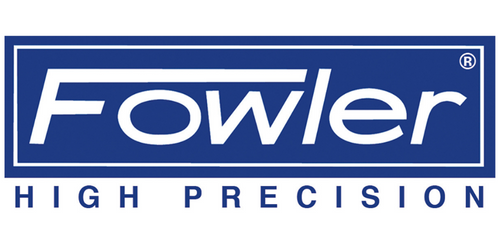When it comes to manufacturing, there are many tools and techniques that can help improve efficiency, accuracy, and quality control. One of the most important of these tools is the height gage, such as the Trimos V-Series or Sylvac Hi_Cal. In this blog post, we will explore 10 reasons why height gaging is crucial to any manufacturing process.
What is Height Gaging?
A height gage is a tool used to measure the height of a part or object. Diameters and centerlines can also be measured. It typically consists of a base, a vertical column, and a measuring device such as a dial indicator or electronic readout. The part being measured is placed near the base, and the measuring device is used to determine its height, diameter or centerline.
Why is Height Gaging Important in Manufacturing?
Height gaging is an essential tool for ensuring that parts meet specifications and tolerances. It helps to identify defects and errors early in the manufacturing process, reducing the risk of scrap, rework, and other quality control issues. Height gages can also help to streamline production processes, saving time and money while improving efficiency.
Overview of the 10 Reasons
Here are 10 specific reasons why height gaging is crucial to any manufacturing process:
- Quality Control
- Efficiency
- Cost Savings
- Accuracy
- Versatility
- Traceability
- Compliance
- Consistency
- Competitive Advantage
- Future-Proofing
Reason #1: Quality Control
One of the most important reasons to use a height gage in your manufacturing process is to ensure quality control. By measuring parts and components accurately and consistently, you can identify defects and errors early in the process and make corrections before they become larger issues. This can save time, money, and resources in the long run.
In addition to identifying defects and errors, height gages can help you ensure that parts meet specifications and tolerances. This is especially important in industries such as aerospace and automotive manufacturing, where precision is critical.
Reason #2: Efficiency
Height gages can also help improve efficiency in your manufacturing process. By measuring parts quickly and accurately, you can reduce the risk of scrap and rework, streamline production processes, and eliminate bottlenecks. This can save time and money while improving overall productivity.
Reason #3: Cost Savings
Height gages can also help you save money in a number of ways. By reducing the risk of scrap and rework, you can minimize waste and reduce the cost of materials. Height gages can also help you reduce labor costs by streamlining production processes and eliminating bottlenecks.
Reason #4: Accuracy
One of the primary benefits of height gaging is its ability to provide accurate measurements. By measuring parts to precise tolerances, you can ensure that they meet specifications and work correctly. This is especially important in industries such as medical device manufacturing, where precision is critical to patient safety.
Reason #5: Versatility
Height gages are also very versatile tools. They can measure a wide range of parts and components, from small precision parts to large assemblies. Height gages can also adapt to different production environments, making them useful in a variety of manufacturing settings.
Reason #6: Traceability
Height gaging can help you track parts through the manufacturing process, providing documentation for quality audits and other compliance requirements. This can help you ensure that your products meet industry standards and regulations, and avoid penalties or legal issues.
Reason #7: Compliance
In addition to traceability, height gaging can also help you meet industry standards and regulations. By ensuring that parts meet specifications and tolerances, you can avoid penalties and legal issues, and maintain the trust of your customers and stakeholders.
Reason #8: Consistency
Height gages can help you maintain consistency in your production processes. By ensuring that parts are uniformly measured and manufactured, you can ensure that they are interchangeable and work correctly. This is especially important in industries such as aerospace and defense, where interchangeability is critical to mission success.
Reason #9: Competitive Advantage
Height gaging can also help you differentiate from your competitors. By ensuring that your products are high-quality, reliable, and consistent, you can improve customer confidence and satisfaction. This can help you build a strong reputation and gain a competitive advantage in your industry.
Reason #10: Future-Proofing
Finally, height gaging can help you prepare for changes in technology and regulations. By investing in long-term success and staying ahead of the curve, you can position your company for growth and profitability in the years to come.
Conclusion
Height gages, such as the Trimos V or Sylvac Hi_Cal, are a crucial tool for any manufacturing process. By ensuring quality control, improving efficiency, saving money, and providing accurate measurements, height gages can help you improve productivity and profitability. Whether you are in aerospace, automotive, medical devices, or any other industry, height gaging is an essential part of your manufacturing toolkit.

